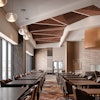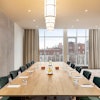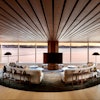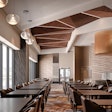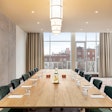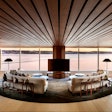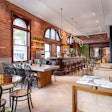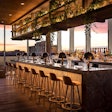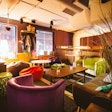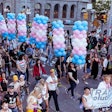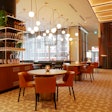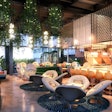Students in Seneca College's School of Fashion and Merchandising got a hands-on lesson in event production on Thursday when they hosted the Redefining Design gala at the Kool Haus. The event—part of a fashion marketing course for design students—took 44 pupils four months to plan and featured a fashion show presenting more than 40 student collections, a visual arts display, and a floral competition. More than 1,000 guests attended three performances throughout the day, including an afternoon show for local high school students and two evening performances.
"I jokingly call it their thesis project, even though it’s not university. What better real-world experience can they have?" instructor and faculty event producer Brian Wickens said during the evening's cocktail reception. "In the very near future they’re going to be out there responsible for their own advertising and promotions, so we use this course and this event to teach them."Although the event ran smoothly, Wickens admitted the planning process was a challenge. "It's supposed to be a class project, but anybody in the event industry knows it's not something you can do just a couple of hours a week and hope to pull off something slick and grand." The fashion design students—who were also featured in the runway show—worked through the weekend leading up to the event, with models being fitted on Saturday and Sunday. The installation began at the Kool Haus on Tuesday and rehearsals took place Wednesday.
"One of the jobs of these teams of students is to try and produce the show with as much sponsorship and donations without being given a budget," Wickens said, noting that he divided the class into 22 teams responsible for handling different aspects of the event, including advertising, catering, decor, and model selection. The pupils secured numerous sponsorships and called on companies includiing Decor & More, Designing Trendz, Micki's, and Exclusive Affair Rentals to help them transform the venue. White draped fabric served to camouflage the Kool Haus' black walls, an elevated white runway provided the backdrop for the fashion show, and the designs created by Seneca's visual arts and floral design students filled the room.
"We’ve tried to produce this event through as much sponsorship, donation, contact sourcing, and networking as possible," Wickens said, noting that one of his mandates is to produce an event with "zero dollars up front." Sponsors included Rowenta, Amici Spa, Canadian Beaver Buzz Energy Drink, Cookie Chicks Inc., DJ Pixie, the Duchess of Markham, Lipton, MacDonald-Faber Fabrics, No Frills, Red Entertainment, the Real Canadian Superstore, Shopper's Drug Mart , Starbucks Coffee, Sunsilk, Teddy's Restaurant & Deli, Tetley, Tim Hortons, and Unilever. The John Bead Corporation also donated $2,000 of Swarovski jewelry for the models' thank-you bags.
"I jokingly call it their thesis project, even though it’s not university. What better real-world experience can they have?" instructor and faculty event producer Brian Wickens said during the evening's cocktail reception. "In the very near future they’re going to be out there responsible for their own advertising and promotions, so we use this course and this event to teach them."Although the event ran smoothly, Wickens admitted the planning process was a challenge. "It's supposed to be a class project, but anybody in the event industry knows it's not something you can do just a couple of hours a week and hope to pull off something slick and grand." The fashion design students—who were also featured in the runway show—worked through the weekend leading up to the event, with models being fitted on Saturday and Sunday. The installation began at the Kool Haus on Tuesday and rehearsals took place Wednesday.
"One of the jobs of these teams of students is to try and produce the show with as much sponsorship and donations without being given a budget," Wickens said, noting that he divided the class into 22 teams responsible for handling different aspects of the event, including advertising, catering, decor, and model selection. The pupils secured numerous sponsorships and called on companies includiing Decor & More, Designing Trendz, Micki's, and Exclusive Affair Rentals to help them transform the venue. White draped fabric served to camouflage the Kool Haus' black walls, an elevated white runway provided the backdrop for the fashion show, and the designs created by Seneca's visual arts and floral design students filled the room.
"We’ve tried to produce this event through as much sponsorship, donation, contact sourcing, and networking as possible," Wickens said, noting that one of his mandates is to produce an event with "zero dollars up front." Sponsors included Rowenta, Amici Spa, Canadian Beaver Buzz Energy Drink, Cookie Chicks Inc., DJ Pixie, the Duchess of Markham, Lipton, MacDonald-Faber Fabrics, No Frills, Red Entertainment, the Real Canadian Superstore, Shopper's Drug Mart , Starbucks Coffee, Sunsilk, Teddy's Restaurant & Deli, Tetley, Tim Hortons, and Unilever. The John Bead Corporation also donated $2,000 of Swarovski jewelry for the models' thank-you bags.
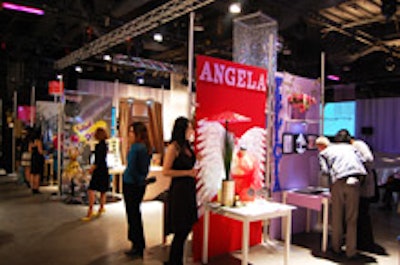
Visual art on display at Redefining Design
Photo: BizBash
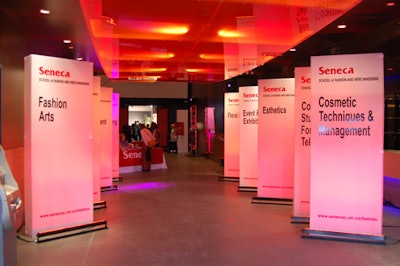
Tall white panels placed at the entrance to the Kool Haus highlighted the names of the nine programs included in Seneca's School of Fashion and Merchandising.
Photo: BizBash
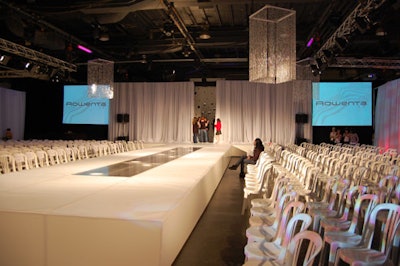
White fabric draped the walls in the runway area, which featured an elevated catwalk surrounded by seating for 500 guests.
Photo: BizBash
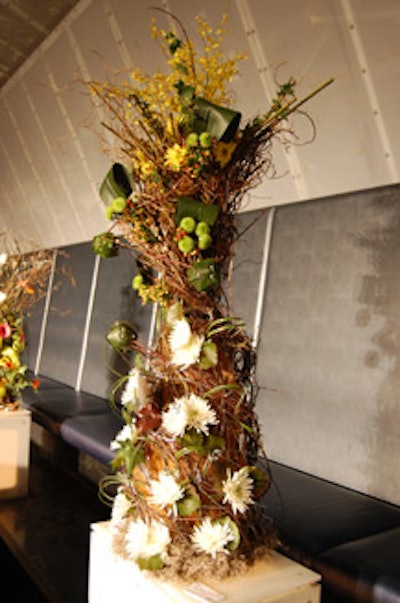
Floral arrangements created by Seneca's floral design students filled the venue.
Photo: BizBash
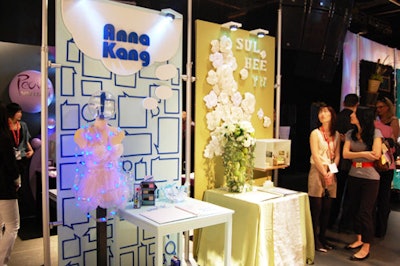
Students in the school's visual merchandising arts program created displays of their work.
Photo: BizBash
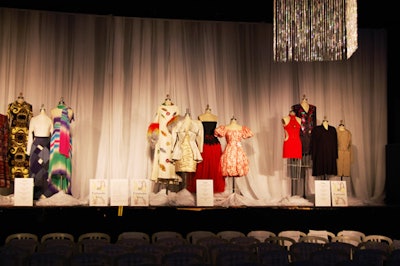
A collection of garments reflecting four decades of fashion paid tribute to Seneca's 40th anniversary and highlighted several items from the college's Fashion Resource Centre, which houses approximately 10,000 garments.
Photo: BizBash
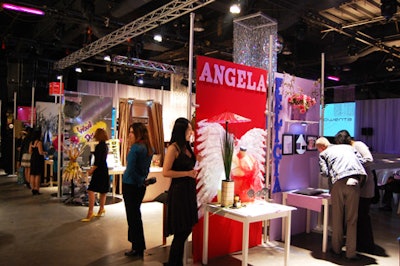
Visual merchandising arts students displayed their portfolios in an area adjacent to the runway.
Photo: BizBash

